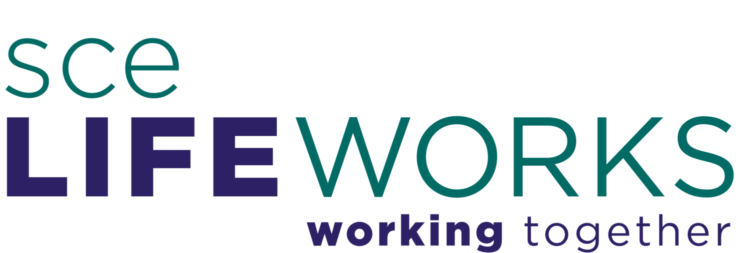
Partners
· Dr. Rick Freeze, Faculty of Education, University of Manitoba (UofM) (Principal Investigator)
· Dr. Rod Kueneman, Department of Sociology, U of M (Co-Investigator)
· Dr. Sid Frankel, Faculty of Social Work, U of M (Co-Investigator)
· Dr. Mike Mahon, Faculty of Physical Education & Recreation Studies,
U of M (Co-Investigator)
· Manitoba Family Services
· Manitoba Education & Training
· Manitoba Health
· Manitoba Labour Education Center
· Human Resources Development Canada
· SCE LifeWorks
· Network South Enterprises Inc.
· Association for Community Living, Manitoba
· Canadian Mental Health Association
· Canadian Manufacturer’s Association
· People First
· Manitoba Chamber of Commerce
· Manitoba Workplace Education Council
Funder:
· Social Sciences & Humanities ResearchCouncil (SSHRC)
· Human Resources Development Canada
Passages to Employement
Timeline:
1994 to 1997
SCE LifeWorks has partnered with research and education institutions and government and community organizations to discover and demonstrate important information and best practises in the field.
Purpose
The purpose of the project was to investigate actual and potential passages through the systemic, attitudinal, and procedural barriers to the gainful employment of persons with disabilities.
Research Strategy
· Questions in the Winnipeg Area Study to determine local societal
attitudes towards education, employment, inclusion and support of
individuals with disabilities.
· Literature review and contacts with experts and researchers in field.
· Detailed interviews with project partners, individuals with disabilities,
their families, employers, coworkers, supported employment agency
providers, family service workers and other supporters.
Results
Survey of Winnipeg area adults
· Indicate there is a broad and deep public support for government
assistance to citizens with physical disabilities, mental handicaps,
chronic or debilitating illness, and mental health or psychiatric
disabilities.
· Strong backing for the provision of government supports to persons with
disabilities to inclusive normal school, work, and community settings.
· Less support for government assistance to those in need due to
unemployment or single parenthood.
· Support for special classes, sheltered workshops, and separate
community programs designed for the disabled were low.
Literature Review, Experts and Interviews
· Supported employment was deemed the most productive passage to
employment.
· Key best practises in supported employment included: person-centred
transition planning, job shadowing, mentoring, job finding clubs,
on-the-job training, job re-design, job sharing, job partners, job coaching,
natural supports, workplace accommodations, individualized supports,
follow-up services, off-site supports, and entrepreneurship.
· Education and training were deemed important passages to
employment. These programs need to focus on skills training and the
development of pragmatic employment attitudes. Most praised programs were a) inclusive of all types and levels of disability, b) non exclusionary
in terms of eligibility criteria, c) comprehensive, in that employment
training is a complementary part of a complete life plan that may involve
supports and services in other areas, and d) person-centred in their
approach to planning and service delivery.
· Employer commitment to hiring employees with disabilities was
deemed to be very important.
Qualitative Analysis of Successful Employment
Experiences of 39 individuals
· Work led to important changes including increased:
a) self-esteem due to greater financial freedom and personal
independence,
b) self-confidence reflected in better communications
and interpersonal skills,
c) social activities and plans for the future, and
d) acceptance at work evidenced by the support of their coworkers.
· Successful employees with disabilities were characterized as liking
their work and being punctual, reliable, committed, conscientious,
good humored, seldom absent, and driven by a work ethic.
· Successful employees were supported by their families in:
a) initial and on-going contacts with a supported employment agency,
b) setting personal goals,
c) independent living, and
d) links to the community.
· The supported employment agencies adopted a holistic
approach which included:
a) person-centred planning with the involvement of family, friend
and other supporters,
b) an introduction to the workplace culture (not just job activities)
of their employment,
c) the orientation and training of their coworkers to become
natural supports,
d) the provision of follow-up and off-site supports,
e) an emphasis on developoing a “good fit” between the worker
and the workplace, and f) an emphasis on developing creative
accommodations, demonstrating financial viability, and
encouraging employer flexibility.
· Employers demonstrated a willingness to be flexible about job
descriptions, hours of work, and work sharing between employees.
· Employers believed they had gained an excellent employee and had
boosted staff awareness, moral and community spirit.

